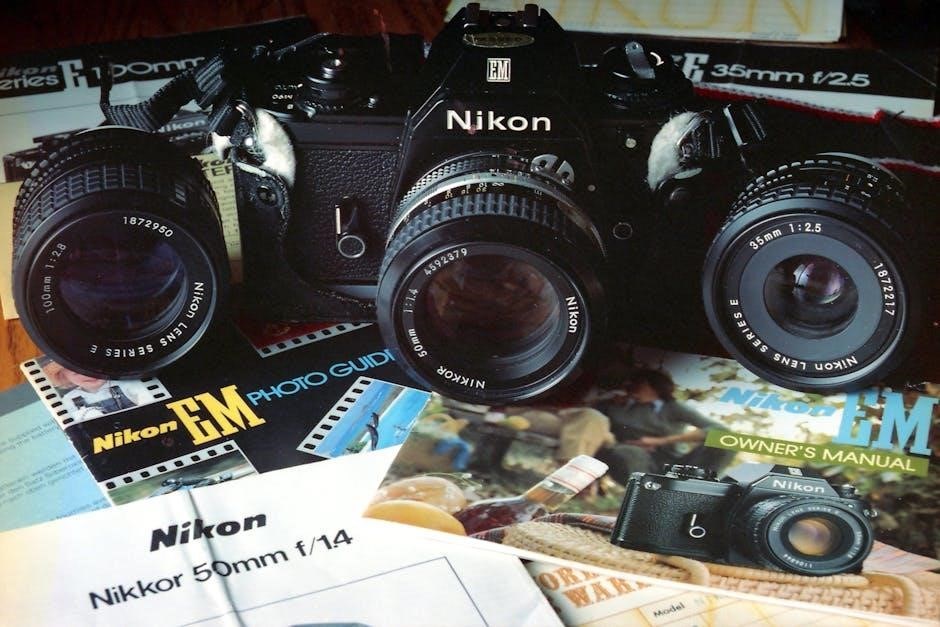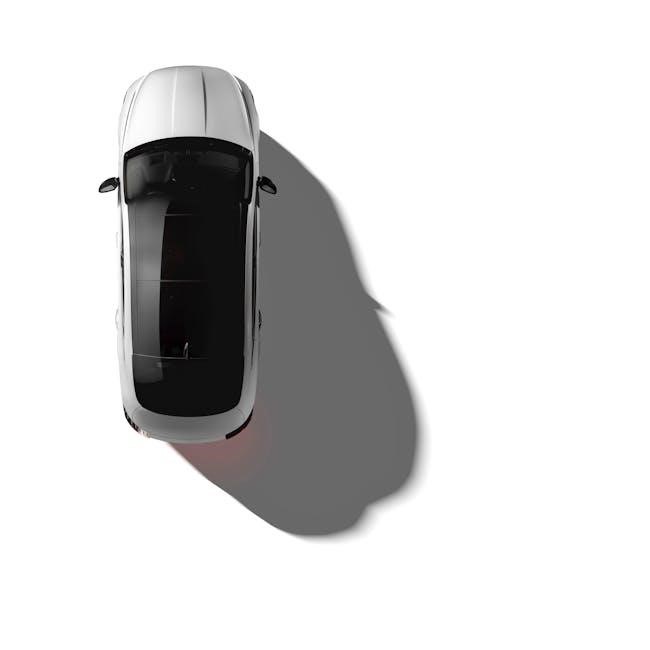The 2011 Hyundai Sonata Owners Manual is a comprehensive guide covering operation, maintenance, and troubleshooting. It offers essential details on safety features, technical specs, and optimal care, ensuring informed ownership and longevity. Available in English, it’s a vital resource for all Sonata drivers.
1.1 Overview of the Manual
The 2011 Hyundai Sonata Owners Manual is a detailed guide designed to help owners understand and maintain their vehicle effectively. It covers essential features, maintenance schedules, and troubleshooting tips, ensuring optimal performance and longevity. The manual provides clear instructions on safety features, technical specifications, and operational guidelines, making it an indispensable resource for all Sonata drivers. Available in English, it can be accessed online for convenient reference.
1.2 Importance of Reading the Manual
Reading the 2011 Hyundai Sonata Owners Manual is crucial for optimal vehicle performance and safety. It provides vital insights into proper maintenance, troubleshooting, and feature operation. Understanding the manual ensures compliance with manufacturer guidelines, prevents potential damage, and enhances driving safety. Regularly reviewing the manual helps owners address issues promptly, reducing repair costs and extending the vehicle’s lifespan. It is a key resource for maximizing the Sonata’s capabilities and ensuring a smooth ownership experience.

Key Features of the 2011 Hyundai Sonata
The 2011 Hyundai Sonata features a 2.4L engine, excellent fuel efficiency, and a spacious interior. It includes air conditioning, power windows, and optional Bluetooth and navigation systems, ensuring a comfortable and tech-enhanced driving experience.
2.1 Engine Specifications
The 2011 Hyundai Sonata is equipped with a 2.4L Theta II four-cylinder engine, delivering 198 horsepower and 184 lb-ft of torque. It features a multi-point fuel injection system, ensuring efficient performance. The engine is paired with a 6-speed automatic transmission, offering smooth acceleration and fuel efficiency. This setup eliminates the need for a V6 or turbocharger, providing ample power for everyday driving while maintaining reliability and cost-effectiveness.
2.2 Fuel Efficiency and Performance
The 2011 Hyundai Sonata offers impressive fuel efficiency, with an EPA rating of 22 mpg city and 35 mpg highway. Its 2.4L engine provides smooth performance, delivering 198 horsepower and 184 lb-ft of torque. The 6-speed automatic transmission enhances fuel economy while maintaining responsive acceleration. This combination ensures the Sonata is both economical and reliable, making it a practical choice for everyday driving.
2.3 Safety Features
The 2011 Hyundai Sonata is equipped with advanced safety features, including electronic stability control (ESC) and anti-lock braking system (ABS). It also features a traction control system and a comprehensive airbag system, including front, side, and curtain airbags. The Sonata earned high marks in IIHS crash tests, offering enhanced protection for occupants. Additional safety features include a tire pressure monitoring system (TPMS) and a robust body structure designed to absorb and distribute collision forces effectively.
Maintenance and Service Schedule
Regular maintenance every 2 years or 30,000 kilometers is crucial for the 2011 Hyundai Sonata to ensure optimal performance and longevity, following the manual’s guidelines.
3.1 Recommended Maintenance Intervals
The 2011 Hyundai Sonata manual outlines specific maintenance intervals to ensure optimal performance. Regular oil changes are recommended every 5,000 to 7,500 miles, while tire rotations should occur every 6,000 miles. Brake inspections are advised every 12,000 miles, and the air filter should be replaced every 15,000 to 30,000 miles. Spark plugs are typically replaced every 30,000 to 105,000 miles, and coolant should be changed every 5 years or 60,000 miles to prevent corrosion and maintain efficiency.
3.2 Oil Change and Fluid Requirements
The 2011 Hyundai Sonata requires regular oil changes using 5W-20 synthetic oil for optimal performance. Oil should be replaced every 5,000 to 7,500 miles. Additionally, coolant, transmission, and brake fluids must be checked periodically. Use Hyundai-approved fluids to maintain warranty and performance. Regular fluid checks ensure proper lubrication and prevent engine damage, extending the vehicle’s lifespan and maintaining its efficiency.

Troubleshooting Common Issues
The manual provides guidance on addressing common problems like dashboard warning lights and TPMS resets. It offers step-by-step solutions to help drivers identify and resolve issues efficiently.
4.1 Dashboard Warning Lights
The manual explains the meanings of various dashboard warning lights, such as oil level, tire pressure, and battery alerts. It helps drivers identify issues promptly, ensuring safety and proper vehicle maintenance. Red symbols indicate critical issues requiring immediate attention, while yellow or orange lights signal less urgent concerns. Green or blue lights typically indicate normal system operations. Understanding these lights is crucial for addressing problems before they escalate. Always consult the manual for specific guidance on each symbol and recommended actions to resolve issues effectively.
4.2 Resetting the TPMS System
To reset the TPMS system on your 2011 Hyundai Sonata, ensure all tires are inflated to the recommended pressure. Locate the TPMS reset button, typically under the steering wheel or in the glove compartment. Press and hold the button until the TPMS light on the dashboard blinks, indicating the system has been successfully reset. This process ensures proper tire pressure monitoring and clears any false warnings, maintaining optimal safety and performance.
Operating the Vehicle
The manual provides guidance on smooth and safe driving practices, emphasizing proper control and optimization of vehicle performance. It ensures a secure and enjoyable driving experience.
5.1 Starting and Stopping the Engine
Starting the Engine: Insert the key into the ignition, turn it clockwise to the “ON” position, and press the ignition button or turn the key further to “START.” Ensure the parking brake is engaged and the transmission is in “P” or “N.” For models with a brake pedal, press it firmly before starting. Stopping the Engine: Shift to “P” (automatic) or first gear (manual), engage the parking brake, and turn the key to “OFF.” Avoid sudden acceleration when starting or stopping for safety. Always ensure the vehicle is secure before exiting.
5.2 Pairing Bluetooth Devices
To pair a Bluetooth device with your 2011 Hyundai Sonata, ensure Bluetooth is enabled on your device. Access the car’s audio system settings, navigate to the Bluetooth pairing option, and select “Add New Device.” Your car’s system will appear in your device’s Bluetooth menu. Select it, enter the pairing code if prompted, and confirm the connection on both devices. Once paired, your device will connect automatically for calls and audio streaming. If pairing fails, consult the manual for troubleshooting tips.

Interior and Comfort Features
The 2011 Hyundai Sonata offers a spacious interior with comfortable seating for five, featuring intuitive controls, standard air conditioning, power windows, and optional Bluetooth and navigation systems.
6.1 Adjusting Seats and Steering Wheel
The 2011 Hyundai Sonata provides comfortable seating with manual controls for adjusting seat position, angle, and lumbar support. The steering wheel can be tilted and telescoped for optimal driver comfort. Adjustments are made using levers or buttons, ensuring a personalized fit for various driving preferences. Memory functions are available for saving preferred settings, enhancing convenience and ease of use for multiple drivers.
6.2 Using the Air Conditioning System
The air conditioning system in the 2011 Hyundai Sonata can be controlled via buttons or knobs on the center console. Press the AC button to activate cooling. Adjust temperature using the dial or buttons, and direct airflow through vents using the mode selector. Fan speed can be increased or decreased for comfort. The recirculation feature minimizes outside air intake, improving cooling efficiency. Ensure proper maintenance by regular cleaning or replacing the cabin air filter for optimal performance.
Technology and Entertainment Systems
The 2011 Hyundai Sonata features an advanced infotainment system, including Bluetooth connectivity, a CD player, and USB ports. The system supports hands-free calling and audio streaming for convenience.
7.1 Navigating the Infotainment System
The 2011 Hyundai Sonata’s infotainment system offers intuitive controls for navigation, Bluetooth pairing, and media playback. Access the menu by pressing the “Menu” button on the touchscreen. Use the steering wheel controls or touchscreen to navigate through options like radio, media, and settings. Pair Bluetooth devices by selecting “Bluetooth” under the “Settings” menu and following on-screen prompts. The system supports voice commands for hands-free operation, enhancing safety and convenience while driving.
7.2 Connecting External Devices
The 2011 Hyundai Sonata supports connecting external devices via USB, auxiliary input, or Bluetooth. For USB, insert the device into the designated port. Use the auxiliary jack for non-USB devices. To connect via Bluetooth, enable Bluetooth on your device, select the system from the available devices list, and confirm pairing. This allows seamless media playback and hands-free calls, enhancing your driving experience with integrated connectivity options.

Storage and Cargo Management
The 2011 Hyundai Sonata offers ample trunk space and cargo capacity, ideal for luggage or larger items. The trunk area is spacious, with adjustable features for custom storage needs, while the glove compartment provides additional storage for smaller items, ensuring a clutter-free and organized cabin environment.
8.1 Trunk Space and Cargo Capacity
The 2011 Hyundai Sonata offers a spacious trunk with a cargo capacity of 16.4 cubic feet, ideal for luggage, groceries, or larger items. The trunk features a wide opening for easy loading and unloading, while the rear seats can be folded in a 60/40 split to accommodate longer or bulkier items, maximizing versatility. Additional storage solutions like tie-down hooks and cargo nets enhance organization and security for your belongings.
8.2 Using the Glove Compartment
The glove compartment in the 2011 Hyundai Sonata provides convenient storage for small items like documents, gloves, and accessories. To open it, pull the release lever located below the steering wheel. The compartment is illuminated for better visibility and features a soft-close mechanism for smooth operation. It also includes a dimming control to adjust the interior light brightness, ensuring easy access to stored items while driving. Regularly clean and organize the compartment to maintain functionality and appearance.

Warranty and Service Information
The 2011 Hyundai Sonata Owners Manual details warranty coverage, including duration and mileage limits, to ensure proper maintenance and repairs. It guides scheduling service appointments and adheres to recommended schedules for optimal performance and longevity, reflecting Hyundai’s commitment to reliability and customer satisfaction.
9.1 Understanding the Warranty Coverage
The 2011 Hyundai Sonata warranty provides coverage for repairs and replacements of defective parts, ensuring reliability and minimizing ownership costs. It typically includes a basic warranty covering parts and labor for a specified period or mileage, along with a powertrain warranty for longer durations. Proper maintenance, as outlined in the manual, is essential to maintain warranty validity. Understanding the warranty terms helps owners utilize covered services effectively, ensuring their vehicle remains in optimal condition throughout the warranty period.
9.2 Scheduling a Service Appointment
To schedule a service appointment for your 2011 Hyundai Sonata, contact a certified Hyundai dealership or use their online scheduling system. Provide your vehicle’s VIN and preferred dates for a convenient booking. Ensure to bring your owners manual for reference. Some dealerships may offer special promotions or packages, so inquire about available options. Arrive early to complete any necessary paperwork, ensuring a smooth service experience. Proper scheduling maintains your vehicle’s health and warranty compliance.

DIY Maintenance and Repairs
This section empowers owners to handle basic maintenance and repairs, such as oil changes and bulb replacements, saving costs and fostering a deeper connection with their vehicle.
10.1 Replacing Headlight Bulbs
To replace the headlight bulbs in your 2011 Hyundai Sonata, start by opening the hood and accessing the back of the headlight assembly. Remove the dust cover by twisting it counterclockwise. Disconnect the wiring harness from the old bulb, then twist the bulb counterclockwise and pull it out. Insert the new bulb, secure it by turning it clockwise, and reconnect the wiring harness. Replace the dust cover to complete the process. Always consult the manual for specific guidance.
10.2 Checking the Engine Oil Level
To check the engine oil level in your 2011 Hyundai Sonata, park the car on a level surface and turn off the engine. Allow the engine to cool, then locate the oil dipstick, typically marked with a yellow or orange handle. Pull out the dipstick, wipe it clean with a cloth, and reinsert it fully. Pull it out again to observe the oil level, ensuring it falls between the marked lines. If low, add the recommended oil type. Regular checks help prevent engine damage.

Exterior Maintenance
Regular exterior maintenance ensures your Hyundai Sonata remains in prime condition. Wash and wax the vehicle to protect the paint and maintain its appearance. Replace windshield wipers when worn.
11.1 Washing and Waxing the Vehicle
Regular washing and waxing are essential for maintaining the Hyundai Sonata’s exterior. Use mild soap and a soft cloth to avoid scratching the paint. Avoid high-pressure washes, which can damage trim or strip wax. Waxing every 2-3 months creates a protective barrier against UV rays and contaminants. This helps preserve the vehicle’s shine and prevents paint deterioration. Always choose high-quality wax for optimal protection and durability.
11.2 Replacing Windshield Wipers
To replace the windshield wipers on your 2011 Hyundai Sonata, start by assessing wear. Purchase the correct size from a trusted supplier or dealership. Pull the wiper arm away from the windshield and press the tab to release the old blade. Slide the new blade into place until it clicks. Ensure proper installation and test the wipers to confirm they clear the windshield effectively. Refer to the manual for specific size recommendations and installation tips.

Safety Systems and Precautions
The 2011 Hyundai Sonata features advanced safety systems, including airbags and electronic stability control. Regular maintenance ensures optimal performance of these systems, protecting occupants in various driving conditions.
12.1 Airbag System Overview
The 2011 Hyundai Sonata is equipped with a comprehensive airbag system designed to enhance occupant safety. It features front airbags, side airbags, and curtain airbags that deploy in moderate to severe collisions. Sensors detect collision forces, triggering airbag inflation to cushion impact. Proper maintenance and monitoring of the airbag warning light are crucial for system reliability. Always follow the manual’s guidelines to ensure optimal protection and functionality of this critical safety feature.
12.2 Child Safety Locks
The 2011 Hyundai Sonata features child safety locks to ensure rear doors cannot be opened from the inside, enhancing child safety. These locks are typically located on the rear doors and can be engaged or disengaged using a lever or button. Proper use prevents children from accidentally opening doors while the vehicle is in motion. Always consult the manual for specific instructions on operating this essential safety feature effectively.

Emissions and Environmental Information
E10 petrol contains up to 10% ethanol, while E5 petrol contains less than 5%, making E10 a more environmentally friendly option by reducing greenhouse gas emissions.
13.1 E10 and E5 Petrol Differences
E10 petrol contains up to 10% ethanol, while E5 petrol contains less than 5%. E10 is more environmentally friendly, reducing greenhouse gas emissions, but may slightly lower fuel efficiency. Both fuels are compatible with the 2011 Hyundai Sonata, but E10 is recommended for its eco-friendly benefits. Always refer to the manual for fuel recommendations to ensure optimal vehicle performance and emissions reduction.
13.2 Reducing Emissions
Reducing emissions in the 2011 Hyundai Sonata involves regular maintenance, proper fuel use, and eco-friendly driving habits. Ensure the engine is well-tuned, and use the recommended oil grade for optimal performance. Avoid aggressive driving and maintain correct tire pressure to improve fuel efficiency. Regularly servicing the emissions system and catalytic converter also helps minimize environmental impact. Adhering to the scheduled maintenance in the manual ensures the vehicle runs cleanly and efficiently.
The 2011 Hyundai Sonata Owners Manual is a vital resource for optimal vehicle performance and longevity. It provides comprehensive guidance for maintenance, troubleshooting, and feature utilization, ensuring a smooth ownership experience.
14.1 Final Tips for Optimal Vehicle Performance
For optimal performance, regularly check fluid levels, tire pressure, and battery health. Adhere to scheduled maintenance intervals and address any dashboard warnings promptly. Keep the vehicle clean and waxed to protect the exterior. Ensure all safety features are functioning correctly, and stay informed about software updates. Proper care ensures reliability, fuel efficiency, and a prolonged lifespan for your 2011 Hyundai Sonata;
14.2 Resources for Further Assistance
For additional support, visit the official Hyundai website or platforms like Manua.ls for free downloads of the 2011 Hyundai Sonata Owners Manual. Websites such as CarManualsOnline.info also provide accessible PDF versions. Contact Hyundai customer support or join owner forums for personalized advice and troubleshooting tips, ensuring you maximize your vehicle’s potential and resolve any issues efficiently.
